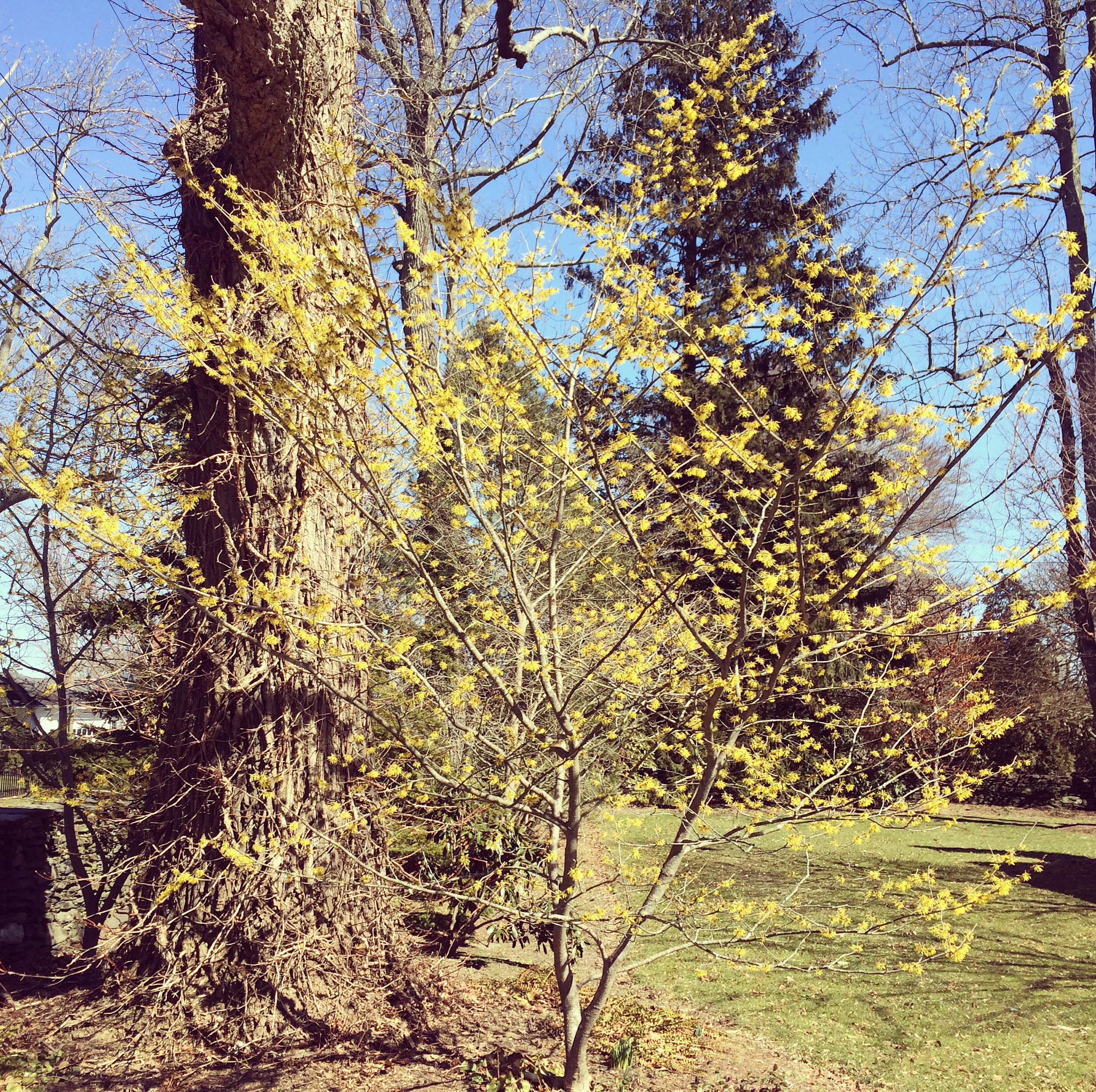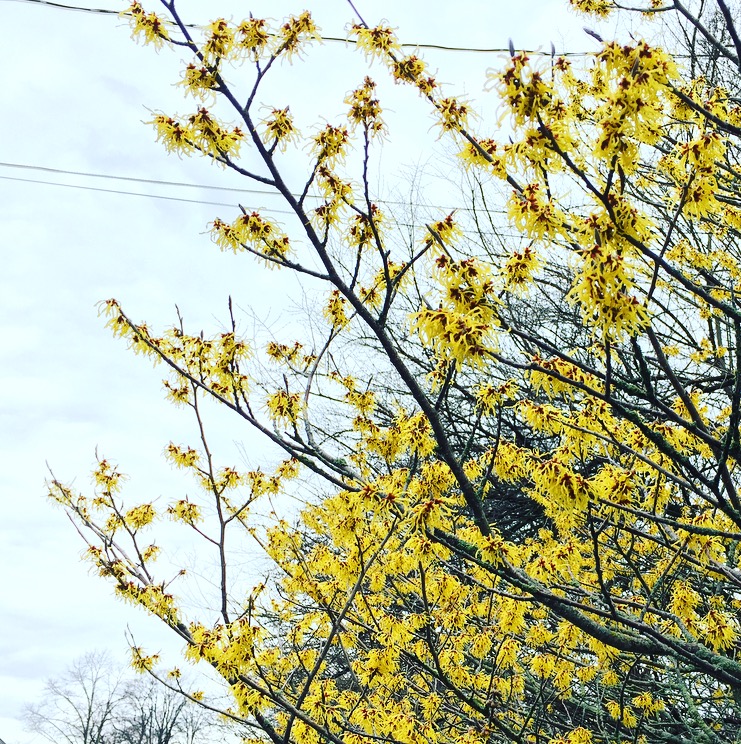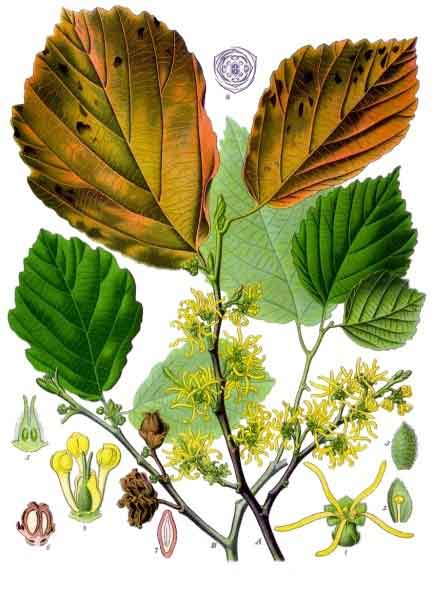Witch hazel (Hamamelis virginiana) is a small deciduous tree or shrub that is native to Atlantic North America, and it is now also cultivated in Europe and Asia. The shrub can reach a height of 15 ft tall. The word "witch" comes from Old English wice meaning "pliant, weak, bendable" from Proto-Indo-European *weyg "to bend, to turn, to yield". The "hazel" part of the name may have come from the use of witch hazel branches for divining. It is a dweller in the understory forest, and It prefers damp woods and may be found along roadsides near forested areas.
The bright yellow blossoms are composed of 1-inch wide flowers and appear spider-like and squiggly. The flowers are fragrant and some cultivars bloom in the fall and some bloom in February, which is quite a site to see in the middle of winter!
The leaves are alternate, egg-shaped and oval and are dark green on top and paler underneath with wavy toothed edges and distinct straight veined patterns. Witch hazel has a smooth gray bark.
Early European settles observed Native Americans using American witch hazel to find underground sources of water. Because the plant chases water, it finds water; divining rods are usually made from witch hazel. It also considered protective.
Witch Hazel can also be used for many medicinal purposes. A medicine can be made from twigs and bark and used for it’s astringent qualities, to soothing scrapes and bruises, and to stop bleeding. A tea can be made and applied as a poultice, the tea is good for burns, insect bites and inflammation.





